CONTACT INFORMATION
STATEWIDE
Virginia Tourism Corporation, (800) VISIT-VA, www.virginia.org
Department of Conservation & Recreation (DCR), Division of State Parks, (804) 786-1712, www.dcr.virginia.gov/state-parks. Campsite reservations: (800) 933-PARK (7275), www.reserveamerica.com
DCR, Natural Heritage Program, (804) 786-7951, www.dcr.virginia.gov/natural-heritage
Department of Game and Inland Fisheries, (804) 367-1000, www.dgif.virginia.gov
NATIONAL FORESTS
Supervisors Office, Roanoke, (888) 265-0019, www.fs.usda.gov/main/gwj
RANGER DISTRICTS
Clinch, Norton, (276) 679-8370
Eastern Divide, Blacksburg, (540) 552-4641
Glenwood-Pedlar, Natural Bridge Station, (540) 291-2188
James River, Covington, (540) 962-2214
Lee, Edinburg, (540) 984-4101
Mount Rogers, (276) 783-5196
North River, (540) 432-0187
Warm Springs, Hot Springs, (540) 839-2521
NATIONAL PARKS
www.nps.gov
Blue Ridge Parkway, Asheville, NC, (828) 271-4779
George Washington Memorial Parkway, McLean, VA, (703) 289-2500
Great Falls Park, Great Falls, VA, (703) 285-2966
Prince William Forest Park, (703) 221-7181
Shenandoah National Park, Luray, VA, (540) 999-3500
1. CHINCOTEAGUE NATIONAL WILDLIFE REFUGE
WHY GO?
Every spring and fall, millions of birds migrate between cold, northern environs and temperate and tropical homes in Central and South America. En route, their needs are simple: an occasional place to rest and food to nourish. Wildlife biologists at Chincoteague National Wildlife Refuge, on the southern tip of Assateague Island, have engineered a deluxe ornithological wayside for the winged travelers. Entire sections of beach are closed during nesting season for such species as the endangered piping plover and Wilsons plover. On small, man-made earthen mounds rising in the middle of bayside lagoons, waterfowl perch and feed, protected from predators. As the human hand tinkers with wildlife balance, real drama plays out in the daily life of birds and land animalsand its on display for all to see.
THE RUNDOWN
Start: Wildlife Pond/Beachfront Loop: Herbert H. Bateman Educational Center on Beach Road; Beachfront Backpack: Toms Cove Visitor Center
Distance: Wildlife Pond/Beachfront Loop: 7.5-mile loop; Beachfront Backpack: 25.0 miles out and back
Hiking time: Wildlife Pond/Beachfront Loop: about 3 hours; Beachfront Backpack: about 10 hours
Difficulty: Wildlife Pond/Beachfront Loop is easy. Beachfront Backpack is moderate due to length. Between May and Sept, mosquitoes, greenhead flies, deerflies, and ticks make exploration of Chincoteagues interior shrub and maritime forest inadvisable, especially at dawn and dusk. Long-sleeved shirts, pants, and bug netting, plus bug spray, can alleviate this problem.
Trail surface: Wildlife Pond/Beachfront Loop: A network of paved roads, dirt roads, and sand jeep trails lead hikers to a wide ocean beach, maritime forest of oak and pine, low dunes, and saltwater marsh. Beachfront Backpack: Sand and surf along a wide ocean beach.
Land status: National wildlife refuge and national seashore
Nearest town: Chincoteague, VA
Other trail users: Cyclists, anglers, over-sand vehicles, horseback riders, and hunters (in season)
Accessibility: Fully half of the refuges trails are paved, including the Wildlife Loop, Swan Cove Trail, and Black Duck Trail.
Canine compatibility: Dogs not permitted, not even in the car
Trail contact: Day hikes: Chincoteague National Wildlife Refuge, 8231 Beach Rd., Chincoteague; (757) 336-6122; www.fws.gov/refuge/chincoteague. Backcountry: Assateague Island National Seashore, Toms Cove Visitor Center (Virginia Ranger Station); (757) 336-6577; www.nps.gov/asis
Schedule: Chincoteague NWR is open daily, 5 a.m. to 10 p.m. May through Sept; 6 a.m. to 6 p.m. Nov through Mar; 6 a.m. to 8 p.m. Apr and Oct. The Toms Cove Visitor Center (National Seashore) is open 9 a.m. to 5 p.m. daily. Portions of beaches and trails may be closed for bird nesting in spring and summer and for hunting in Oct, Dec, and Jan. Be sure to call ahead for details.
Fees/permits: Entrance fee per vehicle; bicycles and pedestrians free. Backcountry permit required; register at the Toms Cove Visitor Center. Backpackers must depart at least 4 hours before sunset, with enough daylight to hike 12 miles to the State Line or Pope Bay backcountry campsites in Maryland. Visit www.nps.gov/asis for camping rules and regulations.
Facilities/features: Restrooms, educational and visitor centers, lifeguarded beach, kayak launch on the Virginia end of the island. Primitive camping is allowed across the Maryland border only; there are portable toilets, but all freshwater must be carried in.
NatGeo TOPO! map: Chincoteague East
NatGeo Trails Illustrated map: Delmarva Peninsula
Other maps: Refuge and Park Service maps available at visitor center and online.
FINDING THE TRAILHEAD
 From the new Chincoteague Bridge (VA 175): For the Wildlife Pond/Beachfront Loop, stay straight to go on Maddox Boulevard (VA 2113). Drive 1.2 miles to a traffic circle and follow Maddox Boulevard through the circle. In 1.4 miles, reach the refuge entrance gate, where Maddox Boulevard becomes Beach Road. Enter the refuge and in 0.3 mile, turn left into the parking area for the Herbert H. Bateman Educational Center at 8231 Beach Road. This ecofriendly building serves as the visitor center, with nature exhibits inside. For the Beachfront Backpack, after entering the refuge, continue past the educational center and enter the Assateague Island National Seashore. In 1.5 miles, reach the Toms Cove Visitor Center on the right to obtain a backcountry permit and parking tag. Visitor center GPS: N37 54.544 / W75 21.337. DeLorme: Virginia Atlas & Gazetteer: Page 63, A5.
From the new Chincoteague Bridge (VA 175): For the Wildlife Pond/Beachfront Loop, stay straight to go on Maddox Boulevard (VA 2113). Drive 1.2 miles to a traffic circle and follow Maddox Boulevard through the circle. In 1.4 miles, reach the refuge entrance gate, where Maddox Boulevard becomes Beach Road. Enter the refuge and in 0.3 mile, turn left into the parking area for the Herbert H. Bateman Educational Center at 8231 Beach Road. This ecofriendly building serves as the visitor center, with nature exhibits inside. For the Beachfront Backpack, after entering the refuge, continue past the educational center and enter the Assateague Island National Seashore. In 1.5 miles, reach the Toms Cove Visitor Center on the right to obtain a backcountry permit and parking tag. Visitor center GPS: N37 54.544 / W75 21.337. DeLorme: Virginia Atlas & Gazetteer: Page 63, A5.
THE HIKE
Screams and cries rise off the oceanfront as hungry gulls and terns scavenge for food along the surf. Beyond Assateague Islands low sand and inland pine, snow geese float restlessly in a freshwater pool. Suddenly, on some silent, unseen signal, a single goose, then two, threethen the entire flock rises in flight. Their whonk-whonk joins with cries of shorebirds in a resounding cacophony.
An explosion of snow geese off the water draws the birders eyes skyward. Here, a broad-winged raptor swoops high above the pond. Its brown wings tilt slightly left, then right in a jittery act of balance. The telltale white head and yellow, hooked bill soon come into focus. This bald eagle, its search for a meal frustrated, soars out of sight behind crowns of loblolly pine.
This winter struggle between prey and predator will end when snow geese fly north in spring. Closer to the ocean, a different life struggle begins in spring when piping plover descend upon Chincoteague National Wildlife Refuge on the southern tip of Assateague Island. After a brief courtship, breeding pairs build a nest in the sand. Up to four eggs will hatch within a month of being laid. For 5 critical days, the young chicks life consists of dodging predators and finding enough food to survive. Days turn to weeks, and the handful of chicks that survive face new dangers. Camouflage, the tiny, sand-colored plovers best defense, leads to unintended consequences: Humans inadvertently step on nests. Off-road vehicles run them over. Gulls harass adult plovers and carry away chicks. Other predators, raccoons and foxes among them, raid nests. Storms send tidal surges crashing over protective dunesviolent weather has destroyed entire nesting seasons at Chincoteague.


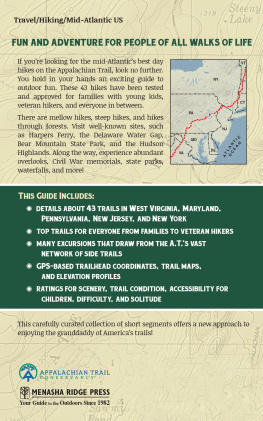
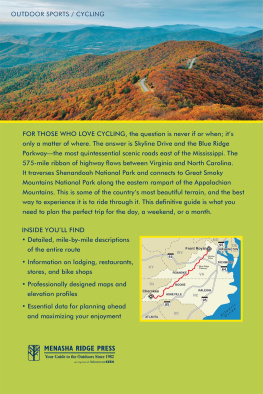
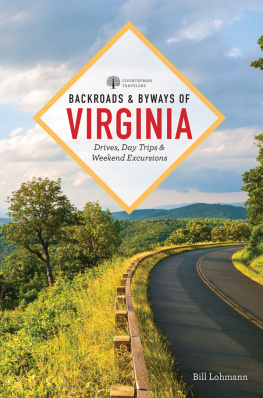
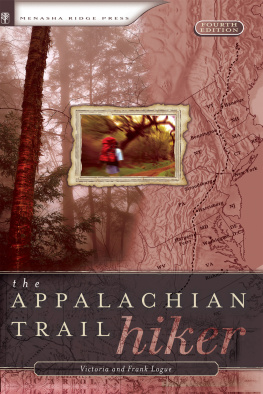
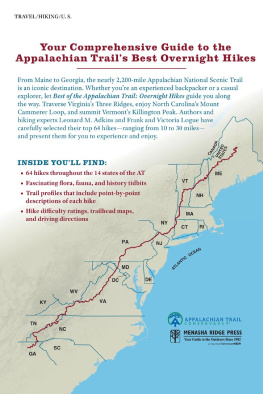

 From the new Chincoteague Bridge (VA 175): For the Wildlife Pond/Beachfront Loop, stay straight to go on Maddox Boulevard (VA 2113). Drive 1.2 miles to a traffic circle and follow Maddox Boulevard through the circle. In 1.4 miles, reach the refuge entrance gate, where Maddox Boulevard becomes Beach Road. Enter the refuge and in 0.3 mile, turn left into the parking area for the Herbert H. Bateman Educational Center at 8231 Beach Road. This ecofriendly building serves as the visitor center, with nature exhibits inside. For the Beachfront Backpack, after entering the refuge, continue past the educational center and enter the Assateague Island National Seashore. In 1.5 miles, reach the Toms Cove Visitor Center on the right to obtain a backcountry permit and parking tag. Visitor center GPS: N37 54.544 / W75 21.337. DeLorme: Virginia Atlas & Gazetteer: Page 63, A5.
From the new Chincoteague Bridge (VA 175): For the Wildlife Pond/Beachfront Loop, stay straight to go on Maddox Boulevard (VA 2113). Drive 1.2 miles to a traffic circle and follow Maddox Boulevard through the circle. In 1.4 miles, reach the refuge entrance gate, where Maddox Boulevard becomes Beach Road. Enter the refuge and in 0.3 mile, turn left into the parking area for the Herbert H. Bateman Educational Center at 8231 Beach Road. This ecofriendly building serves as the visitor center, with nature exhibits inside. For the Beachfront Backpack, after entering the refuge, continue past the educational center and enter the Assateague Island National Seashore. In 1.5 miles, reach the Toms Cove Visitor Center on the right to obtain a backcountry permit and parking tag. Visitor center GPS: N37 54.544 / W75 21.337. DeLorme: Virginia Atlas & Gazetteer: Page 63, A5.